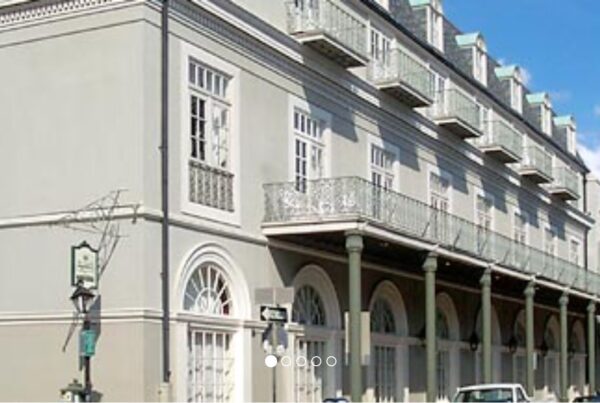Two of the presentations tie directly into current events. Ron Merville’s presentation on solar installations gave us a good overview of how these systems are being incorporated in a variety of applications. As alternative energy sources become increasingly mainstream their usefulness to, and means by which they are incorporated in, the electric grid of the nation may ultimately determine their fate. Engineers have been involved in a three year project to consider ways to bolster the Eastern Interconnection, and part of that work acknowledges the need to accommodate injecting power from alternative energy sources. Results of that effort are just being publicized now. Years ago the energy secretary under President Clinton, Bill Richardson, described much of the U.S.’s electric power transmission system as a “third world grid”. Today the description isn’t much different, with it being cited as “balkanized” due to ownership by over 500 separate entities. Where the results of this three year effort will eventually lead remains to be seen, but the timeliness of Ron’s presentation should have us all thinking about how alternative energy systems will factor into everyday life and the buildings we examine.
John Cronin’s presentation Hurricane Sandy and storm surge was also very timely in terms of offshoot efforts now occurring and, in particular, the recognition of the importance of storm surge prediction and effects. First, many jurisdictions either have or are evaluating their infrastructure to gauge exactly what the risks are relative to surge. Parts of New York City are being considered for increasing street elevations in areas particularly hard hit. Even small communities have engaged in analysis and cost estimates to raise roads to elevations that decrease the risk of inundation during storm surges. Needless to say, homeowners have also begun the task of raising their properties to elevations that make storm surge more survivable. While constructing houses and buildings to elevations matched to base flood heights is not uncommon, storm surge effects of Hurricane Sandy brought this message home succinctly. For local governments to consider changing street and road elevation illustrates just how important that message was.
Additionally, the National Weather Service is making significant changes in its methods for hurricane and tropical storm information dissemination, as well as storm surge modeling. Use the link below to see what the weather service has in store as changes for the 2013 hurricane season:
Button Text
Vanderbilt University engineering professor Dr. P.K. Basu’s presentation included discussion of very high strength concrete. While much of the information focused on military applications of such materials, ultra high strength concrete can be expected to find its way into infrastructure protection applications in the future. The devastating effects of terrorist attacks, as well as other building failures that affect concrete, may all be substantially reduced by the use of improved concrete materials in the future. As these materials move from the area of research and specialized military applications into the mainstream, knowing about them and their history can assist in our doing our job better as building inspection engineers. While improved strength concrete may not have been a help in the recent Boston Marathon bombings, their occurrence demonstrates that our role as inspection engineers must continue to focus on ever-changing events and risks to the buildings we examine.
This year NABIE was again able to offer a separate means by which to garner continuing education credits (CEUs) that have nearly universal applicability. The ASHRAE program on Indoor Air Quality presented on Sunday morning by Hoy Bohanon provided such credits. For a number of states obtaining continuing education units for PE or RA license renewal requires that course work or presentations be evaluated by an independent agency to “certify” course content and quality. Because professional licensure is handled on a state by state basis, a small organization such as NABIE does not have the resources to ensure continuing education applicability for every state in which members may reside. In several instances in the past, use of an outside and pre-approved presentation has helped get around that obstacle. Presentations given involving ASCE, ASHRAE, and the PEI in New York State have helped conference attendees get at least some credit for attending the NABIE conference.
ASHRAE cooperated with NABIE to make Hoy’s presentation available at a substantially reduced cost, and a member donation helped further offset the expenditure. NABIE will continue to pursue means to gain access to programs that may help members obtain some of their needed CEUs more easily through the annual conference.
A final thought about the conference this year is to reflect on those who attend with members. Significant others and family members often are left on their own while the member spends two and half days at a multitude of presentations. While this has been the conference approach for many years, coming to Nashville in 2013 included an opportunity for those folks to engage in a NABIE organized and sponsored activity by visiting the Frist Center. NABIE will continue to explore and evaluate alternative approaches to conference structure and activities, but an effort will be made for all future conferences to create opportunities for family and friends of attendees to have an activity they can pursue while the member is engaged.
Creating each year’s conference is a task that the Executive Director and Board attempt to do in a manner that has applicability to the membership. Conference ratings over the last five years or so show the job is being done reasonably effectively, with a typical overall rating in the area of 8.5 out of 10. Sometimes the applicability of some presentations escapes some attendees, but this year a number of those presentations factored in current events in the months after Nashville.
NABIE will continue to strive for such connections, but input from all of you is very valuable in conference planning. To ensure continued success of each annual gathering, don’t hesitate to contact our executive director, Ms. Alexandra Binder, to suggest new topics to cover or to volunteer to be a presenter. If you have ideas about possible speakers and presenters, pass them along as well. And of course such ideas can also be passed along to officers and board members.
During the 1990s, conference presentations included papers or other scholarly topics of value to building inspection engineers. While this model may continue to have merit, the available pool of presenters willing to assemble materials into an hour and half long – or longer – presentation was rapidly exhausted. While a few technical journals came out of those efforts, it was apparent such an approach could not be sustained from within our membership. Perhaps the entrepreneurial aspects of our work as engineering consultants specializing in the examination of buildings meant that we simply could not devote the uncompensated time to such efforts, or maybe such scholarly works were just not on our radar. Whatever the reason, papers and their presentation to the membership, along with publication in a technical journal, fell by the wayside.
If this approach should once again be tried, we need to hear that from our members. Let us know if NABIE should become a venue for scholarly research and publication efforts from our members concerning work in the field of building inspection engineering. The annual conference can be anything our members feel they want it to be, or it can continue very much in the manner in which it has been delivered for some 15 to 18 years.
*This article had been posted in the Spring-Summer 2013 edition of The Examiner.


